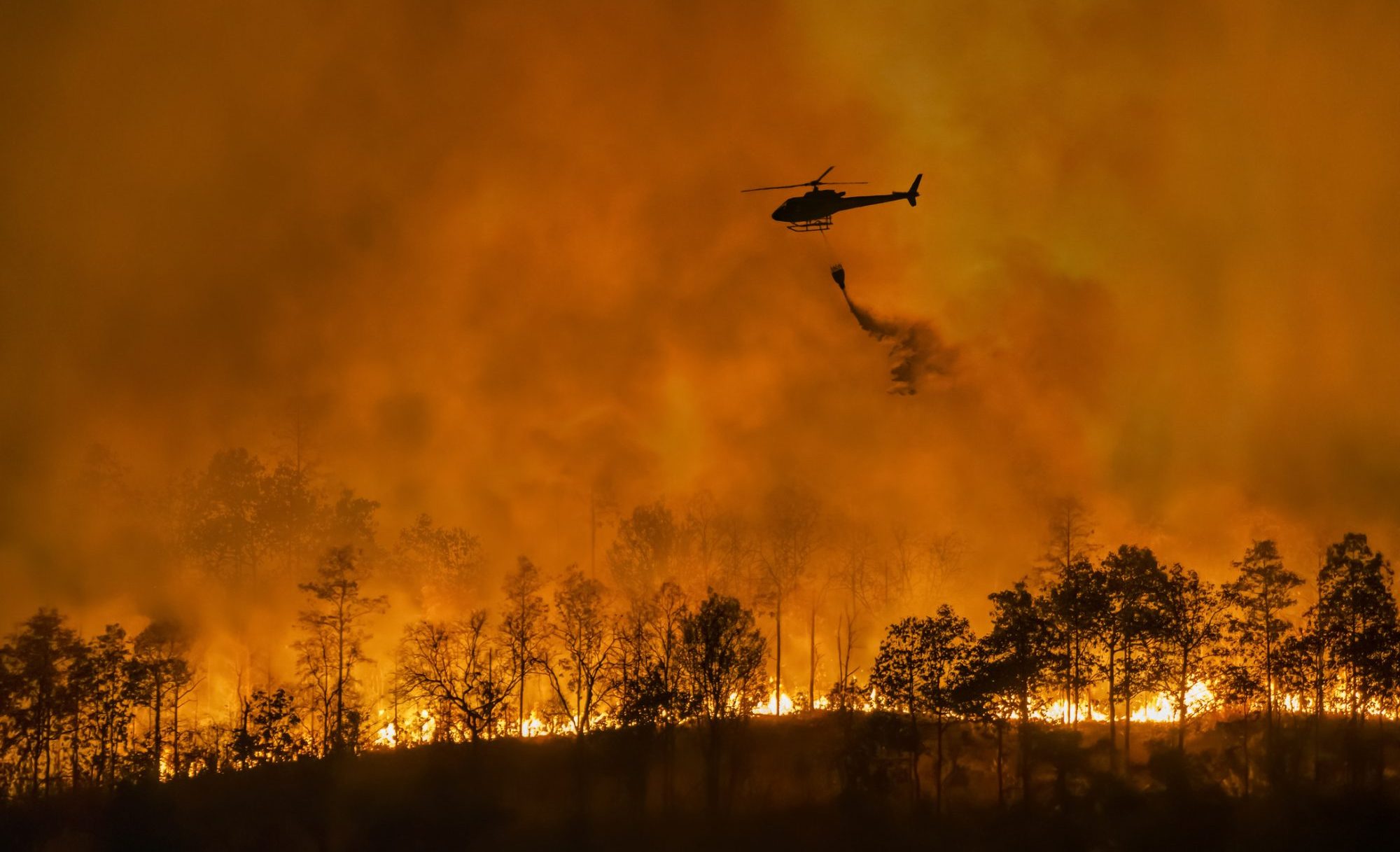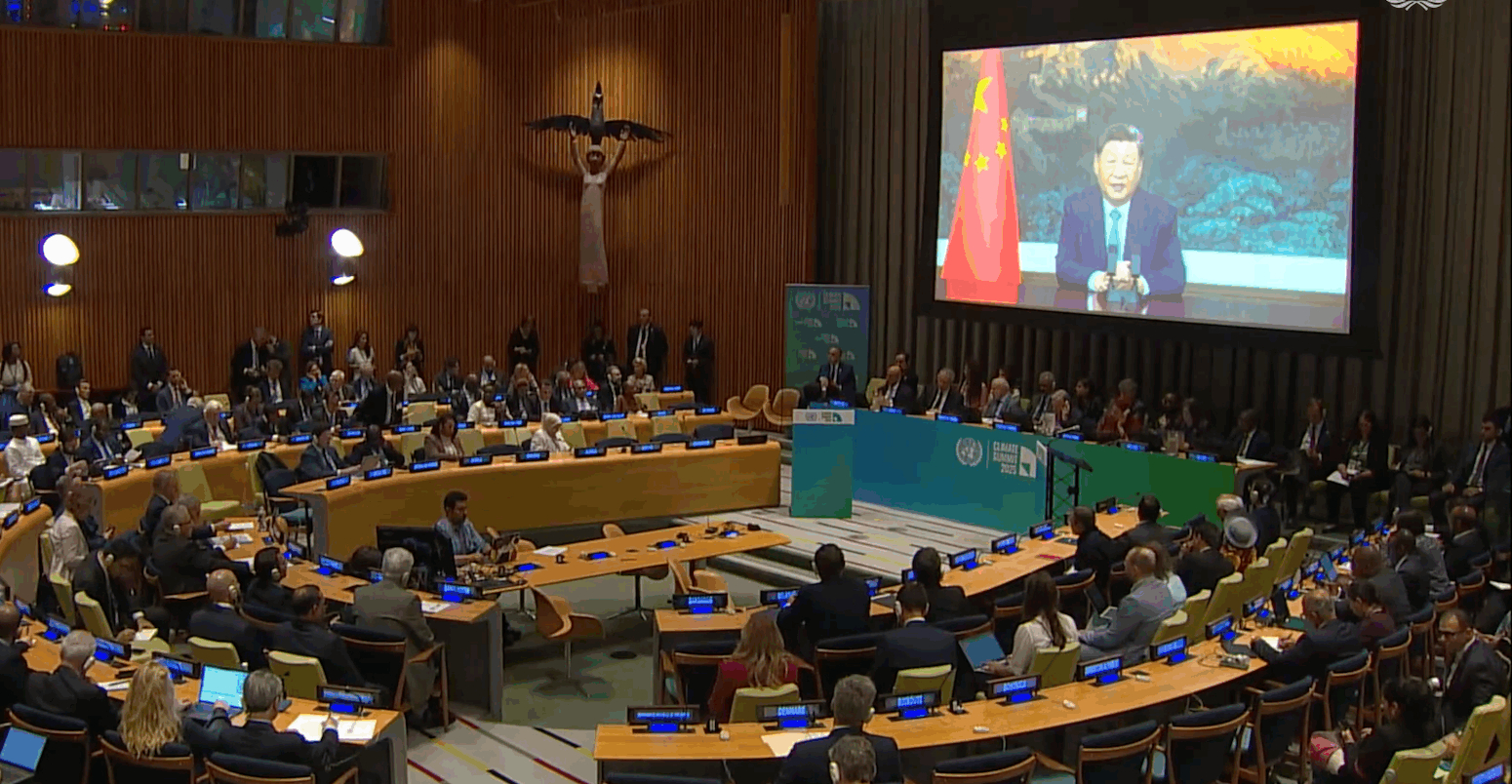Report on Corporate Climate Risk Management and the Sustainable Development Goals
Introduction: Applying Systemic Risk Lessons to the 2030 Agenda
The global response to the COVID-19 pandemic demonstrated a capacity for rapid, large-scale adaptation to systemic threats. However, a similar level of urgency has not been applied by the private sector to the escalating climate crisis, a critical component of the 2030 Agenda for Sustainable Development. With the deadline to achieve the Sustainable Development Goals (SDGs) approaching, rising global emissions and temperatures pose a direct threat to international targets, particularly SDG 13 (Climate Action). Corporate inaction on climate risk jeopardizes not only environmental stability but also long-term economic viability, undermining SDG 8 (Decent Work and Economic Growth). This report outlines a framework for businesses to apply lessons learned from recent global disruptions to climate risk management, thereby aligning corporate strategy with the SDGs.
The Imperative for Climate Action in the Private Sector
Assessing Systemic Climate Risks and Their Impact on the SDGs
Climate change acts as a risk multiplier, exacerbating existing vulnerabilities and creating new challenges that threaten progress across multiple SDGs. Research indicates that failure to manage climate-related risks could reduce corporate earnings by up to 7 percent annually by 2035, representing a significant obstacle to sustainable economic growth (SDG 8). The interconnected nature of climate risk means its impacts cascade across societal and economic systems:
- Extreme weather events disrupt agricultural output, threatening SDG 2 (Zero Hunger).
- Damage to physical assets and supply chains undermines efforts to build resilient infrastructure and foster sustainable industrialization under SDG 9 (Industry, Innovation, and Infrastructure).
- Climate-driven health crises and resource scarcity place additional strain on public health systems, impacting SDG 3 (Good Health and Well-being) and SDG 6 (Clean Water and Sanitation).
- Disruptions to energy systems compromise progress toward SDG 7 (Affordable and Clean Energy).
The private sector consistently deprioritizes these long-term environmental risks compared to governmental and civil society bodies, creating a critical gap in the global effort to achieve the 2030 Agenda.
Corporate Resilience as a Catalyst for Sustainable Development
Aligning Risk Management with the 2030 Agenda
Investing in climate adaptation and decarbonization is fundamental to building corporate resilience. Such investments yield significant returns, with studies showing up to $19 in avoided losses for every dollar spent. Proactive climate risk management is not merely a defensive strategy but a core component of sustainable business practice that directly supports the SDGs. Companies that embed resilience into their core strategies are better positioned to withstand market volatility, maintain stakeholder trust, and contribute to a just transition toward a net-zero economy. This proactive stance supports SDG 12 (Responsible Consumption and Production) by ensuring operational continuity and fosters the innovation required for SDG 9.
A Strategic Framework for Corporate Climate Action
Six Key Strategies for Aligning with the Sustainable Development Goals
Drawing lessons from the COVID-19 pandemic, businesses can adopt a structured approach to climate risk management that advances their contribution to the SDGs.
-
Mainstream Climate Scenario Planning
To effectively contribute to SDG 13, companies must integrate multi-scenario climate planning into core strategic processes. This involves stress-testing value chains and investment decisions against various global warming pathways and policy outcomes, enabling businesses to build the adaptive capacity necessary to thrive in a changing climate.
-
Foster Cross-Functional Collaboration
Achieving the SDGs requires unprecedented cooperation, a principle enshrined in SDG 17 (Partnerships for the Goals). Climate risk management must be an enterprise-wide responsibility, breaking down departmental silos. Integrating climate considerations into all functions—from finance and operations to human resources—enhances organizational agility and ensures a holistic response to environmental and regulatory pressures.
-
Implement Continuous Risk Monitoring
The dynamic nature of climate change necessitates a shift from static risk registers to continuous monitoring systems. Employing real-time data and predictive analytics allows for agile decision-making, safeguarding economic stability (SDG 8) and ensuring that strategic planning remains aligned with the pace of environmental change.
-
Leverage Technology and AI with Ethical Oversight
Artificial intelligence and other technologies are powerful tools for advancing SDG 9 by enabling sophisticated climate risk modeling and value chain optimization. However, their application requires robust ethical governance to prevent biases that could undermine social goals, such as SDG 5 (Gender Equality) and SDG 10 (Reduced Inequalities). Human oversight by climate-literate teams is essential for ensuring accuracy and accountability.
-
Build Resilient and Responsible Supply Chains
Overreliance on suppliers in climate-vulnerable regions poses a significant risk to global commerce. By diversifying supplier bases and engaging partners on climate exposure, companies can build resilience that supports both SDG 12 and the stability of global value chains essential for SDG 8. Stress-testing supply chains against climate scenarios is a critical step in ensuring operational continuity.
-
Maintain Agility to Seize Green Transition Opportunities
A proactive approach to climate risk management allows companies to identify opportunities in the transition to a net-zero economy. By investing in solutions such as renewable energy microgrids or water reuse systems, businesses can reduce operational costs, avoid production losses, and develop competitive advantages. This agility turns risk into a driver of innovation, aligning corporate growth with SDG 7, SDG 9, and SDG 13.
Conclusion: From Risk Management to Sustainable Resilience
The climate crisis represents the foremost systemic risk of our time, demanding a concerted effort aligned with the Sustainable Development Goals. By applying the lessons of recent global disruptions, businesses can transform their approach from reactive risk management to proactive, sustainable resilience. This strategic shift is no longer optional; it is a defining capability for long-term success and a critical contribution to the global 2030 Agenda. Building resilience is the most valuable asset a company can develop to navigate future crises and secure a competitive advantage in a sustainable world.
Analysis of Sustainable Development Goals in the Article
1. Which SDGs are addressed or connected to the issues highlighted in the article?
-
SDG 13: Climate Action
- The entire article is centered on the urgency of addressing climate change, framing it as a significant systemic risk for businesses. It explicitly mentions the goal to “nearly halve emissions” and avoid “climate catastrophe,” which is the core of SDG 13.
-
SDG 9: Industry, Innovation and Infrastructure
- The article discusses the need for businesses to build resilience, adapt operations, and invest in new systems. The example of Danone investing in a “microgrid and water reuse system” directly relates to upgrading infrastructure to be more sustainable and resilient, a key aspect of SDG 9.
-
SDG 8: Decent Work and Economic Growth
- The article links climate inaction directly to economic consequences, stating that companies could “lose up to 7 percent of annual earnings by 2035.” It promotes proactive climate risk management as a way to avoid losses, maintain economic stability, and uncover new opportunities, thus connecting sustainable practices with long-term economic growth.
-
SDG 12: Responsible Consumption and Production
- The discussion on diversifying supply chains to reduce reliance on climate-vulnerable suppliers, as practiced by Walmart and The Coca-Cola Company, aligns with promoting sustainable production patterns. The call for companies to adopt sustainable practices and integrate climate risk into their core strategies (e.g., Unilever’s Climate Transition Action Plan) is central to this goal.
-
SDG 17: Partnerships for the Goals
- The article emphasizes the need to “break down silos and collaborate” both within companies (cross-functional teams) and along the value chain (engaging with suppliers). This reflects the multi-stakeholder collaboration spirit of SDG 17.
2. What specific targets under those SDGs can be identified based on the article’s content?
-
Under SDG 13 (Climate Action):
- Target 13.1: Strengthen resilience and adaptive capacity to climate-related hazards and natural disasters. The article’s main theme is building corporate resilience to climate risks, with recommendations like scenario planning, diversifying suppliers, and proactive adaptation strategies.
- Target 13.2: Integrate climate change measures into national policies, strategies and planning. The article advocates for this at a corporate level, urging businesses to “mainstream climate scenario planning” and “embed resilience into their core strategy,” as seen in Unilever’s “Climate Transition Action Plan.”
-
Under SDG 9 (Industry, Innovation and Infrastructure):
- Target 9.4: Upgrade infrastructure and retrofit industries to make them sustainable, with increased resource-use efficiency. The Danone example of investing in a “microgrid and water reuse system” to combat droughts and save on electricity costs is a direct illustration of this target.
-
Under SDG 12 (Responsible Consumption and Production):
- Target 12.6: Encourage companies to adopt sustainable practices and to integrate sustainability information into their reporting cycle. The article highlights companies like Unilever, Swiss Steel Group, and GEA Group that have integrated climate risk into their strategic planning, governance, and enterprise risk management cycles.
-
Under SDG 17 (Partnerships for the Goals):
- Target 17.17: Encourage and promote effective public, public-private and civil society partnerships. The article implicitly points to this by noting that climate risks are “deprioritized by the private sector compared with governments and civil society,” suggesting a need for better alignment and partnership. The call for collaboration with suppliers also fits this target’s ethos.
3. Are there any indicators mentioned or implied in the article that can be used to measure progress towards the identified targets?
-
Financial and Economic Indicators:
- Avoided financial losses: The article states that investments in resilience are “seeing up to $19 in avoided losses for every dollar spent.” Danone’s case provides a specific metric: “avoiding €112 million in potential production losses.” This can measure the effectiveness of adaptation under Target 13.1.
- Percentage of earnings at risk: The projection that companies could “lose up to 7 percent of annual earnings by 2035” due to climate risks can be used as a baseline indicator to track the reduction of financial exposure over time.
-
Corporate Strategy and Governance Indicators:
- Integration of climate plans: The existence and implementation of corporate strategies like Unilever’s “Climate Transition Action Plan” or the integration of climate risk into GEA’s “enterprise risk management (ERM) cycle” serve as qualitative indicators for Target 13.2 and Target 12.6.
- Frequency of risk monitoring: The recommendation that “Risk registers should be updated at minimum monthly” provides a measurable indicator of a company’s agility and commitment to continuous risk monitoring.
-
Operational and Supply Chain Indicators:
- Supplier diversification: The number or percentage of companies that are actively restructuring supply chains to “reduce reliance on climate-vulnerable suppliers,” as exemplified by Walmart and The Coca-Cola Company, can be an indicator of supply chain resilience (Target 13.1).
- Investment in sustainable infrastructure: Specific investments, such as Danone’s in a “microgrid and water reuse system,” can be tracked as indicators of progress towards Target 9.4.
4. Summary Table of SDGs, Targets, and Indicators
| SDGs | Targets | Indicators Identified in the Article |
|---|---|---|
| SDG 13: Climate Action | 13.1: Strengthen resilience and adaptive capacity to climate-related hazards. 13.2: Integrate climate change measures into policies, strategies and planning. |
|
| SDG 9: Industry, Innovation and Infrastructure | 9.4: Upgrade infrastructure and retrofit industries to make them sustainable. |
|
| SDG 12: Responsible Consumption and Production | 12.6: Encourage companies to adopt sustainable practices and integrate sustainability information into their reporting. |
|
| SDG 8: Decent Work and Economic Growth | 8.4: Improve global resource efficiency and decouple economic growth from environmental degradation. |
|
| SDG 17: Partnerships for the Goals | 17.17: Encourage and promote effective public-private and civil society partnerships. |
|
Source: trellis.net







